June's Monthly Newsletter
A reticent June, a non-recipe for a damp Sunday, and the glories of Ostia Antica
All photographs taken by me at Ostia Antica in May and June 2023
As I write this it’s raining outside and chicken broth is bubbling on the stove. Pastina in brodo is, I think we can safely say, an anomalous start to June in Rome. It is, however, one of my favourite things: small pasta shapes (or just broken pieces of larger pasta—dried, fresh, whatever is at hand) cooked in chicken broth. Once cooked add lots of parmesan, possibly a tiny squeeze of lemon, and maybe a little chili if you like (I do). It’s ideal for damp Sunday afternoons and also has major funk-relieving properties.
Late May and early June haven’t been entirely drenched, however, and in recent weeks I’ve made a number of sunny forays with various groups of charming folk to one of my absolute favourite sites: Ostia Antica. Tradition says Ostia was founded by Rome’s fourth king, Ancus Marcius, and it is at the very root of Rome’s origins: the ostium (mouth) of the river is close to the salt marshes from whence salt was sailed up the Tiber to a fordable point on the river below a defensibly useful hill.
As Rome grew so too did her port, and by the birth of Empire it was the engine room which fed the million and more living in the caput mundi. Ostia then was a substantial city in its own right with a population of some fifty thousand (for context when Vesuvius destroyed Pompeii it had a population of perhaps twenty thousand). Rome’s port was also one of the most cosmopolitan places in the world. Soldiers and merchants; sailors and slaves: all came over Mare Nostrum from all parts of an Empire which stretched across parts of three continents.
It was through the port of Ostia that the panem et circensis which appeased the mob in Rome arrived in Italy: all of those lions and tigers and bears (oh, my!) which wowed the crowds in the Colosseum, and the grain from the fertile valley of the Nile.
One finds grand public buildings—a panoply of temples, a business district, a theatre—alongside the grand houses of wealthy merchants. More ordinary apartment buildings jostle with bath complexes and taverns. It’s half an hour on local train from town, and is so large that even when it’s busy it’s never busy. It’s also fun for children with lots of exploring opportunities (I still haven’t finished exploring it after almost twenty years of taking tours there). I honestly can’t recommend you go enough.

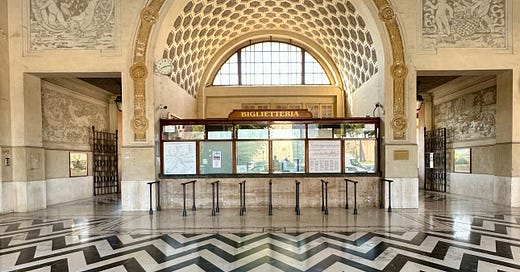



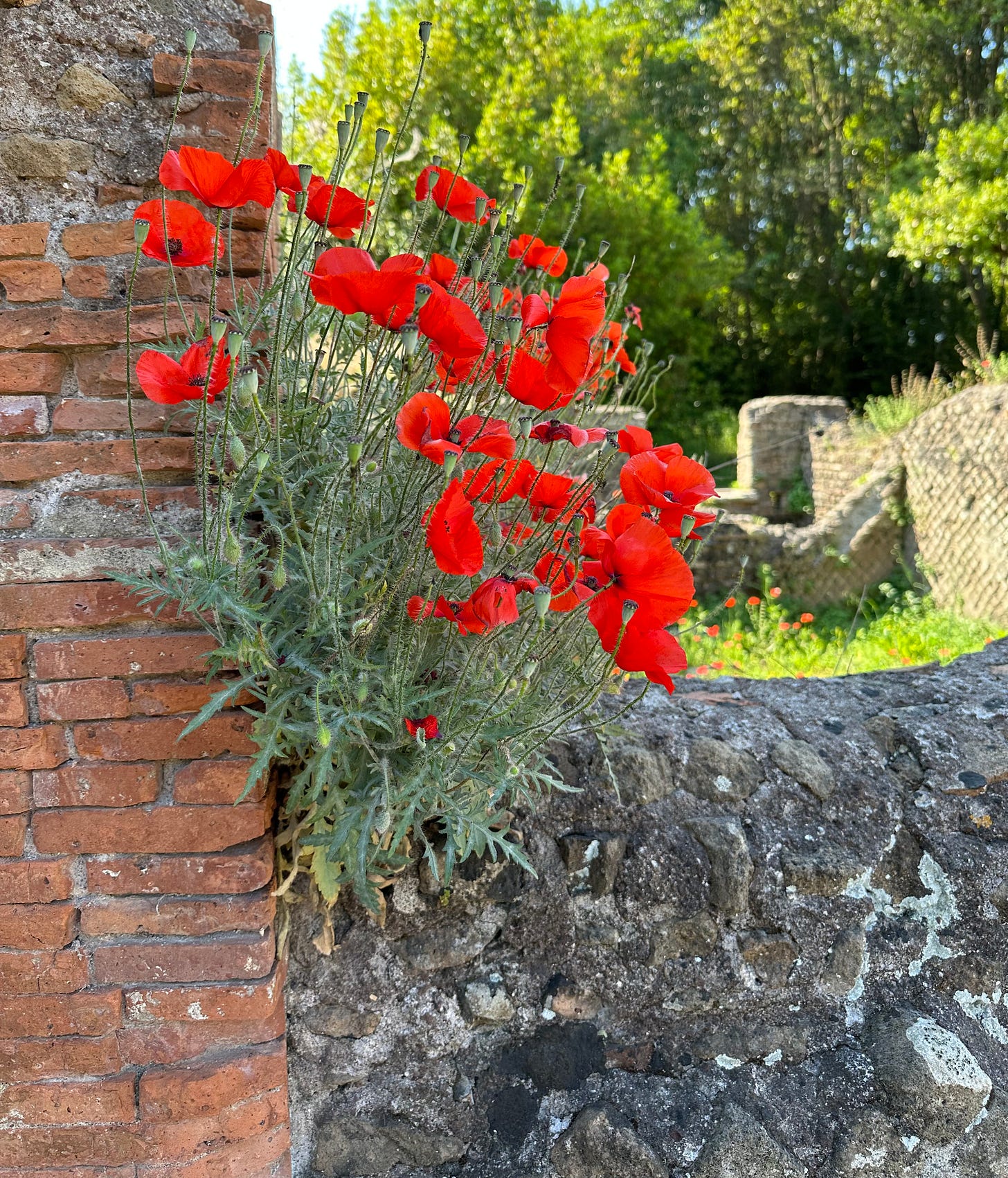
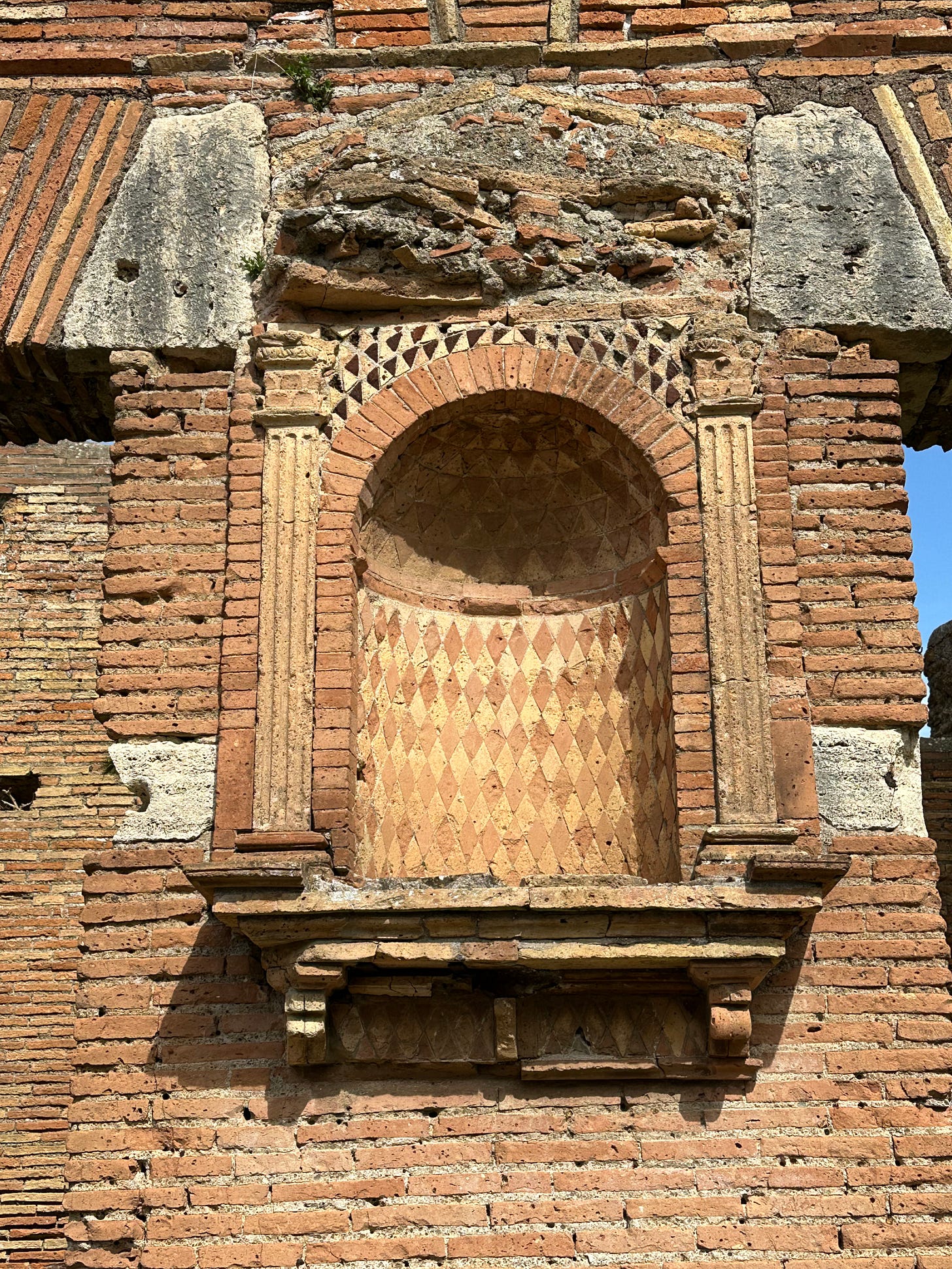
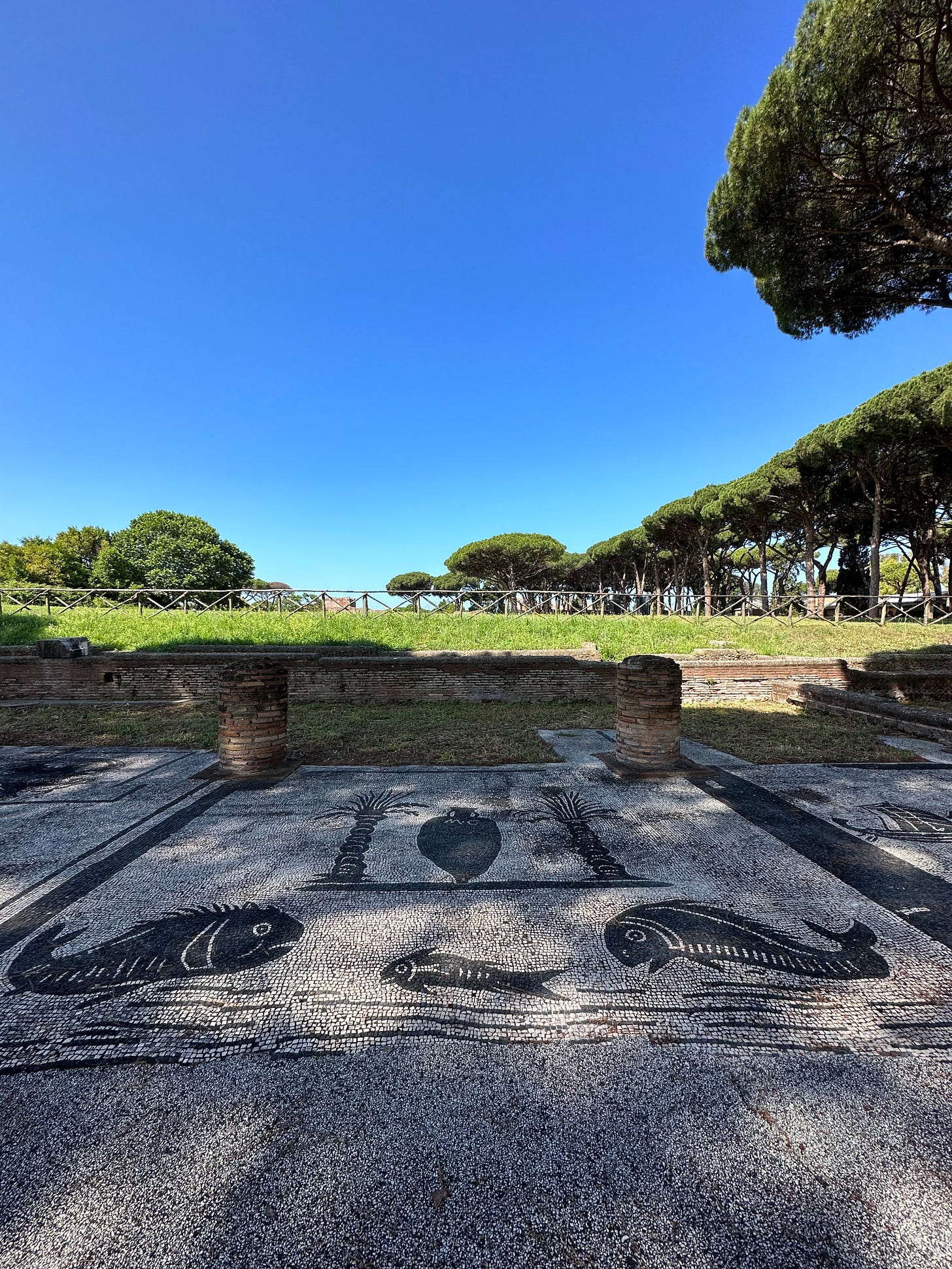

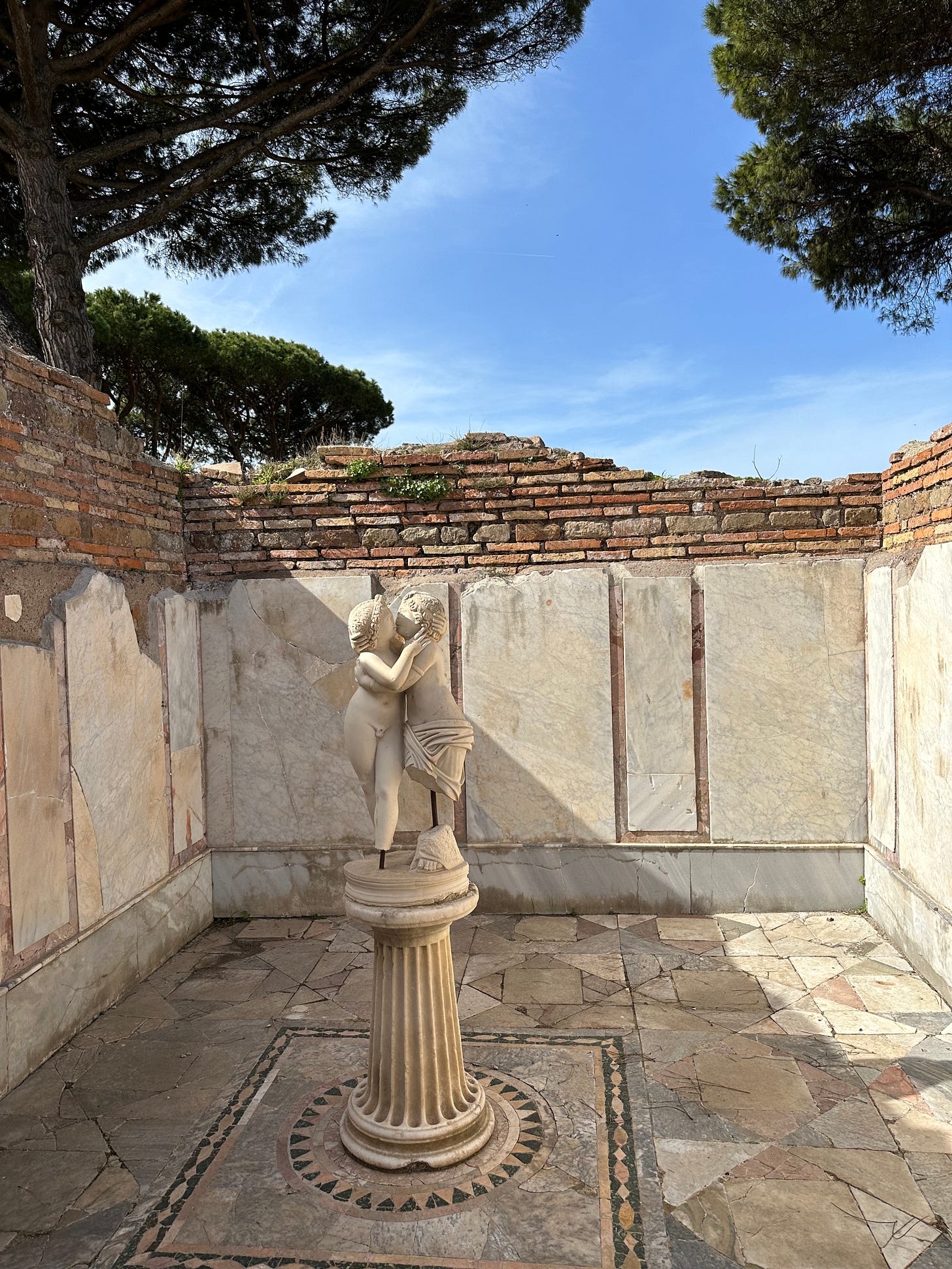
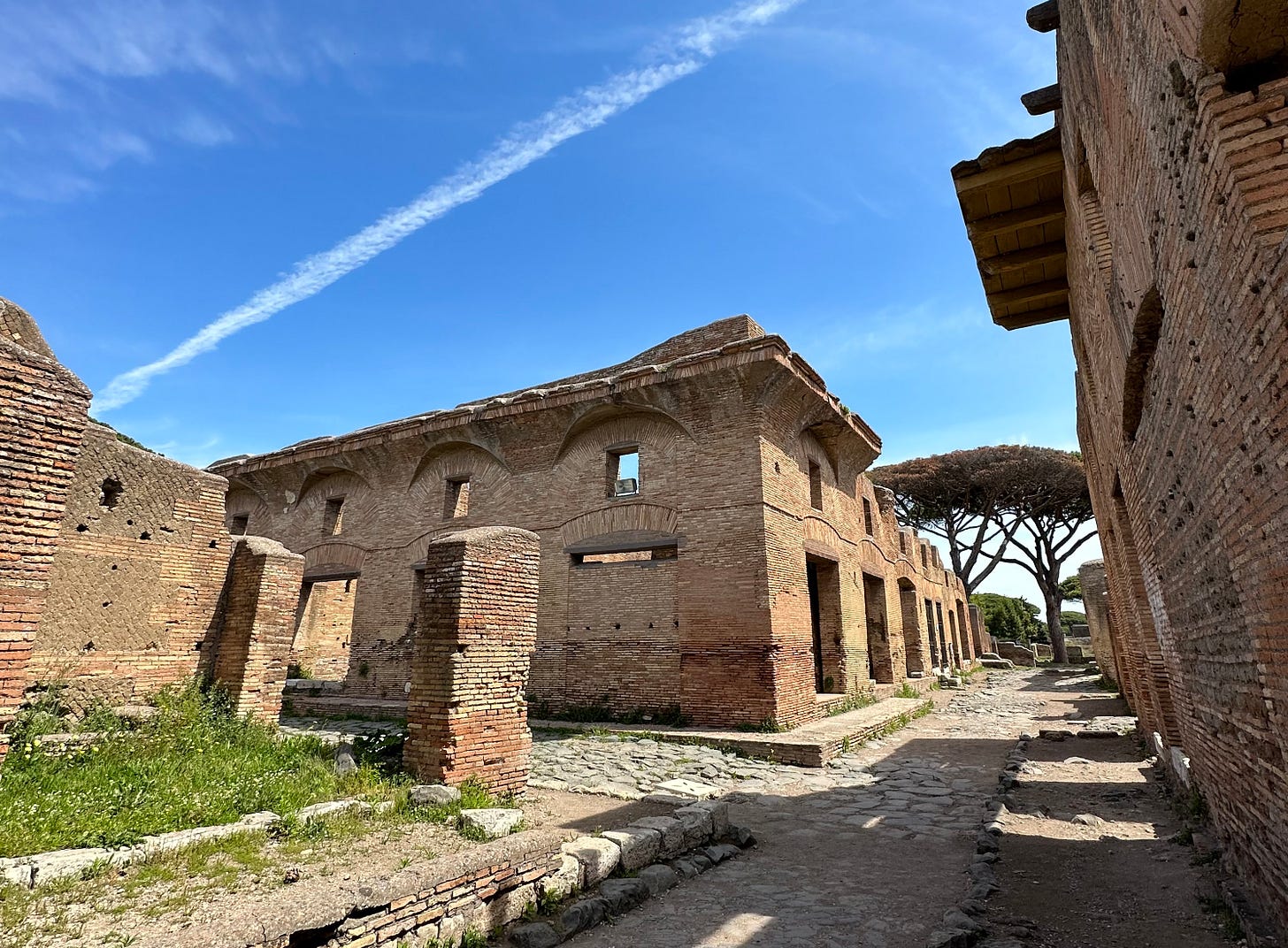


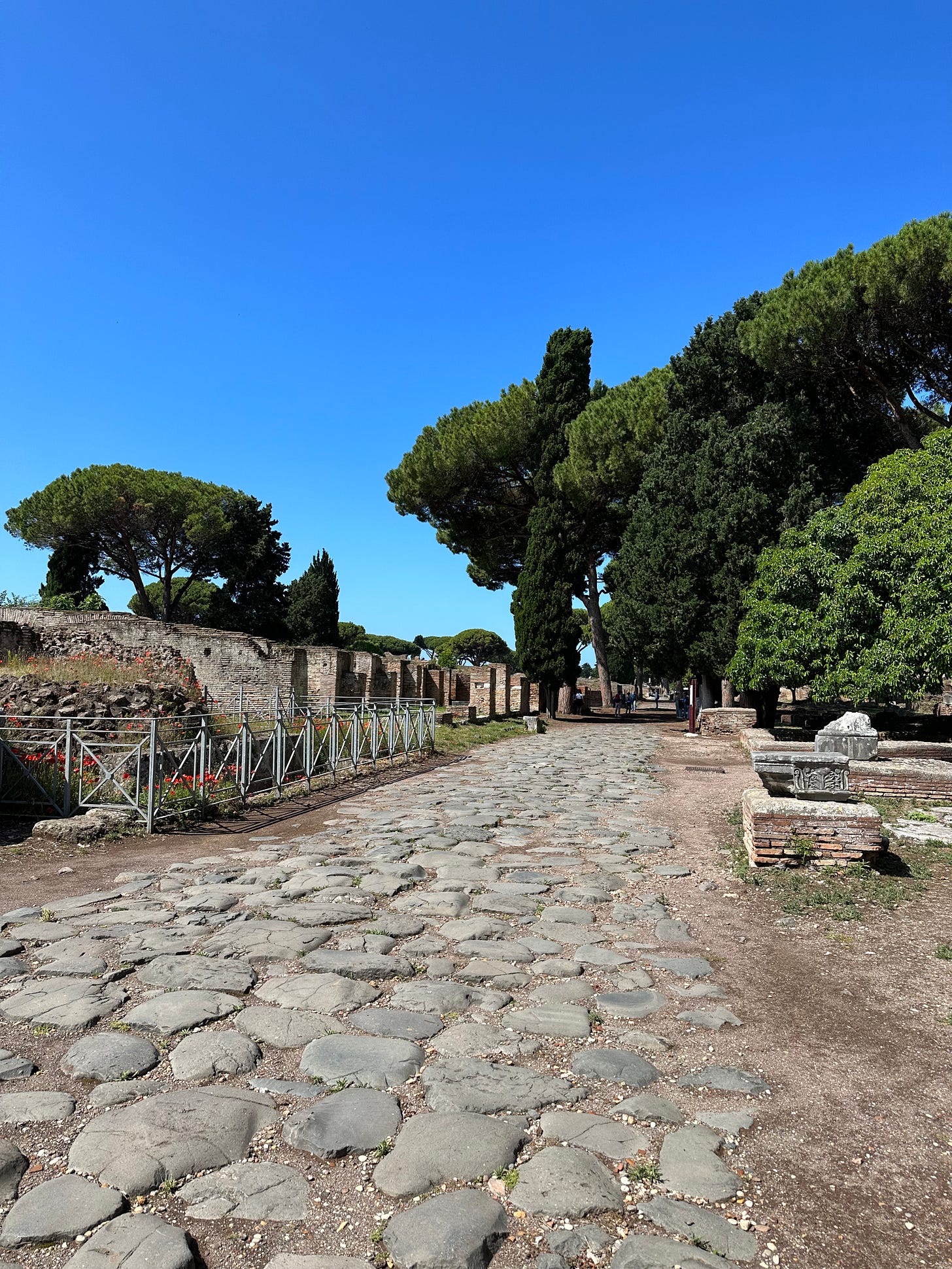
Ostica Antica was one of my favorite things to do on my 2015 trip to Rome